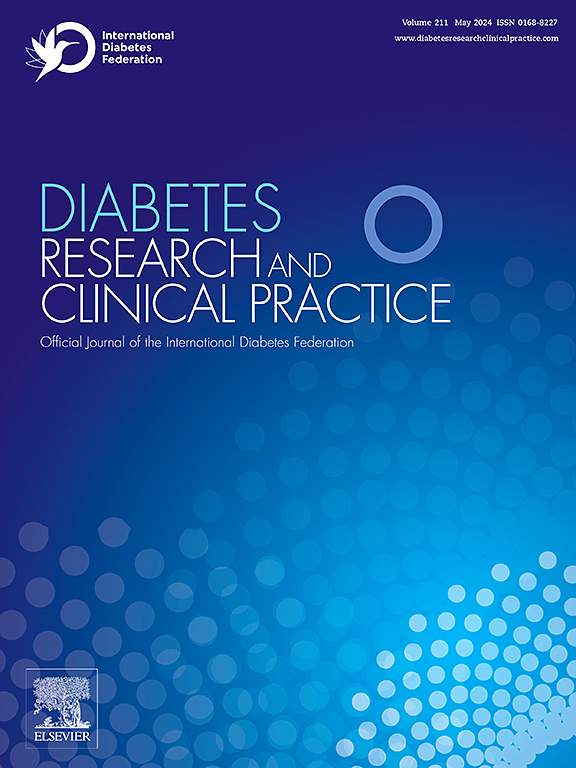Association of the triglyceride glucose index with sudden cardiac death in the patients with diabetic foot ulcer
IF 6.1
3区 医学
Q1 ENDOCRINOLOGY & METABOLISM
引用次数: 0
Abstract
Background
This study examines the relationship between the TyG index and the risk of sudden cardiac death (SCD) in the patients with diabetic foot ulcer (DFU).
Methods
688 type 2 diabetes mellitus (T2DM) inpatients with DFU between January 2010 and December 2023 was included in this retrospective study. The 1:1 propensity score matching (PSM) method was applied. The relationship between TyG index and SCD risk was analyzed using the Kaplan-Meier (K-M) survival curve analysis, multivariate Cox proportional hazard regression model, Restricted cubic spline (RCS) model analysis and subgroup analyses.
Results
Over a median follow-up period of 61 months, 38 cases of SCD were recorded. After PSM, 71 pairs of score-matched patients according to TyG index were generated. K-M survival curves revealed higher SCD rates in patients with TyG index ≥9.65. The Cox proportional hazard model, independently associated with the risk of SCD (HR: 75.98; 95 % CI: 9.16 ∼ 630.40; P < 0.001). RCS model showed that SCD risk was non-linearly correlated with gradual increases in TyG index levels. Stratified analyses indicated a consistent relationship between increasing TyG index and SCD risk across all subgroups.
Conclusions
Elevated TyG index independently confers an increased risk for SCD in individuals with DFU.
研究背景本研究探讨了糖尿病足溃疡(DFU)患者的TyG指数与心脏性猝死(SCD)风险之间的关系。方法:本回顾性研究纳入了2010年1月至2023年12月期间688名患有DFU的T2DM住院患者。采用1:1倾向得分匹配(PSM)法。采用卡普兰-梅耶(K-M)生存曲线分析、多变量考克斯比例危险回归模型、受限立方样条曲线(RCS)模型分析和亚组分析,分析了TyG指数与SCD风险之间的关系:在中位 61 个月的随访期间,共记录了 38 例 SCD。在 PSM 之后,根据 TyG 指数生成了 71 对评分匹配的患者。K-M生存曲线显示,TyG指数≥9.65的患者SCD发生率更高。Cox比例危险模型显示,TyG指数≥9.65的患者SCD发生率较高。(HR: 75.98; 95 % CI: 9.16 ∼ 630.40; P 结论:TyG 指数升高会增加 DFU 患者发生 SCD 的风险。
本文章由计算机程序翻译,如有差异,请以英文原文为准。
求助全文
约1分钟内获得全文
求助全文
来源期刊

Diabetes research and clinical practice
医学-内分泌学与代谢
CiteScore
10.30
自引率
3.90%
发文量
862
审稿时长
32 days
期刊介绍:
Diabetes Research and Clinical Practice is an international journal for health-care providers and clinically oriented researchers that publishes high-quality original research articles and expert reviews in diabetes and related areas. The role of the journal is to provide a venue for dissemination of knowledge and discussion of topics related to diabetes clinical research and patient care. Topics of focus include translational science, genetics, immunology, nutrition, psychosocial research, epidemiology, prevention, socio-economic research, complications, new treatments, technologies and therapy.
 求助内容:
求助内容: 应助结果提醒方式:
应助结果提醒方式:


